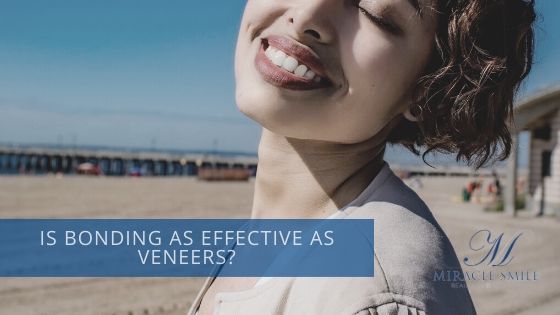Feeling confident enough to smile is important to your mood, relationships, and self-confidence. Unfortunately, if you are worried about the appearance of your smile whether that be from a chipped tooth, yellow teeth, or discolored fillings, your self-esteem is likely to suffer.
Taking care of your teeth at the onset is the best way to ensure that your smile is something that you can be proud of. But if you find that you have discolorations or other issues that you’d like to fix, you do have options.
There are many methods and treatments available to improve the appearance of teeth. Some are as simple as tooth whitening, but some instances require a more permanent method.
For someone who has fillings, white spots, and other discolorations or issues, whitening treatment will not be as effective. In these instances, dental veneers or dental bonding are the best way to improve the overall appearance of the tooth. These improve the color, shape, and style of the tooth.
Deciding whether to get dental veneers or dental bonding is difficult if you don’t know the differences between the two.
What are Veneers?
Veneers can change the shape, improve the color, and even add length to your teeth. They are very thin pieces of porcelain that cover the front of your teeth. You can have a single veneer or a full set to correct your smile. This can help make your teeth look even in size and color.
Veneers are custom made for your teeth. Everything from the right shade of white to the shape of your teeth is taken into consideration when the veneers are made.
Veneers are best for people who have minimal damage to their teeth but have severe stains and wear on their teeth. These are fit right over the natural tooth so it’s important that the underlying teeth are in good shape so your smile looks even.
Veneers are best for people who have chipped or cracked teeth, large gaps between their teeth, severe stains and discolorations, teeth that overlap, and teeth that are worn.
Veneers are typically used to create a uniform, white smile. They can cover discolorations and minor imperfections more effectively than bonding since the material they are made from is stronger. If taken care of properly, they can last for up to 15 years.
The downside of veneers aside from the higher cost is that they are permanent. In order to attach the veneers to your teeth, your dentist must remove a layer of tooth enamel. This is replaced with the porcelain veneer.
What is Dental Bonding?
On the other hand, dental bonding is the process of applying white fillings to the teeth. This is used to either repair individual teeth or rebuild multiple teeth to create a more even smile.
While this is relatively similar to veneers, dental bonding is best for people who want to repair teeth in order to improve their smile.
This is a simple solution for minor problems and discolorations. Dental bonding covers cracks, gaps, chips, exposed root from receding gums, minor stains, and misshapen teeth.
Dental bonding is a faster procedure than veneers. It generally only takes a single appointment and is less than expensive than veneers. These can last for up to 10 years with proper care.
It’s important to note that dental bonding is made of composite resin which is not as strong as porcelain. Dental bonding is more easily chipped and stained. Additionally, dental bonding is much more limited than veneers in that it is more difficult to correct the color of discolored teeth.
The best way to determine which approach is right for you is to consult a dental professional. If you’re interested in learning more about veneers, dental bonding, and the best choice for you, call our office today to schedule an appointment.

